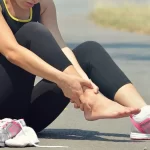Back pain can be a significant setback for athletes of all levels. Whether you are a weekend football enthusiast or a professional tennis player, any disruption to your training and competition schedule can be frustrating. However, a well-structured rehabilitation programme that includes targeted exercises, guided physical therapy, and a gradual return-to-play protocol can help you safely regain strength and mobility, setting you on the path to get back in the game with confidence.
You Have To Understand Your Back Injury
Before starting any rehabilitation plan, it is crucial to understand the nature of your back injury. Common causes include muscle strains, herniated discs, or stress fractures, often resulting from repetitive motions, overtraining, or improper technique. A thorough evaluation by a qualified healthcare professional—such as a sports physician or orthopaedic specialist—will help determine the severity of your injury and guide your treatment plan.
It is important to remember that back pain is not always isolated to the spine. Sometimes, issues in the hips, knees, or core muscles can contribute to back discomfort. Identifying these underlying factors is essential for a comprehensive approach to healing.
Targeted Exercises for Strength and Stability
A strong and stable core is essential for supporting the spine and reducing stress on your back. Once acute pain and inflammation have subsided, targeted exercises can help restore strength and protect against future injuries. Here are a few to consider:
Bridge
- Lie on your back with knees bent and feet flat on the floor.
- Gently lift your hips off the ground, keeping your shoulders and upper back in contact with the floor.
- Hold for a few seconds before lowering.
Bird Dog
- Begin on all fours with your back in a neutral position.
- Extend one arm and the opposite leg simultaneously, keeping your core engaged.
- Return to the starting position and repeat with the other side.
Plank Variations
- Start with the classic forearm plank, ensuring your body is in a straight line.
- Progress to side planks or incorporate leg lifts to challenge your stability further.
- Always perform these exercises with proper form. Poor technique can exacerbate back pain or lead to new injuries.
Guided Physical Therapy
Physical therapy plays a central role in rehabilitation, offering personalised guidance to ensure you are performing exercises safely and effectively. A trained physiotherapist can:
- Assess Your Biomechanics: They will identify imbalances or weaknesses that may have contributed to your injury.
- Develop a Tailored Exercise Programme: Specific exercises will be recommended to target your problem areas and reinforce proper movement patterns.
- Progress Your Workouts: As your strength improves, a physiotherapist will help you gradually increase intensity and complexity, reducing the risk of re-injury.
Regular check-ins with a physiotherapist can also provide valuable feedback on your progress and highlight any adjustments needed in your training routine.
Gradual Return-to-Play Protocols
Returning to the field, court, or gym too soon can jeopardise your recovery. A structured return-to-play protocol helps you transition back to full competition in stages:
- Low-Impact Activities
Start with activities that minimise stress on your back, such as swimming or using an elliptical machine. This helps rebuild cardiovascular fitness without compromising recovery. - Sport-Specific Drills
Introduce skill-based exercises that mimic the movements of your sport but at a reduced intensity—think slow jogs for footballers or half-swings for golfers. - Controlled Scrimmages or Practice Sessions
Before jumping into a full match, participate in controlled drills or training sessions. Gradually increase speed, force, and duration as tolerated. - Full Competition
Once you can complete training without pain or limitations, you may be ready to return to competitive play. However, it is still vital to monitor any signs of discomfort and modify your approach if necessary.
What’s Your Next Step?
Recovering from back pain is a journey that demands patience, commitment, and the right professional support. By focusing on targeted exercises, guided physical therapy, and a gradual return-to-play protocol, athletes can safely restore strength, stability, and confidence in their game.
At Liberty Orthopaedic Clinic, our team of specialists is here to support you every step of the way—whether you need a comprehensive evaluation, customised rehabilitation programme, or ongoing guidance to keep you in peak condition. Contact us today to schedule an appointment and take the first step towards a healthier, pain-free return to your sport.










